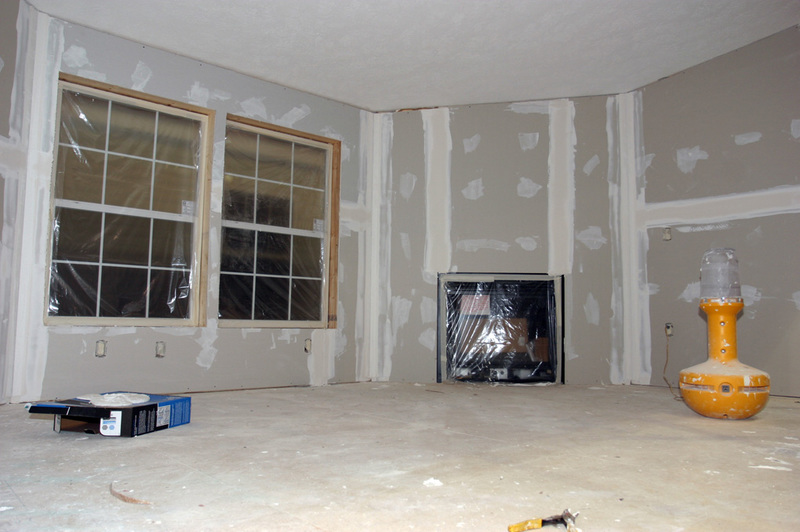Having a hard time searching how to repair water damaged drywall? You came to the right place! A water-damaged drywall repair causes tension and frustration, especially if you’ve never done it before.
Although it’s desirable to tear a hole in your house’s ceiling or wall, this isn’t very easy because the structure of your home should be stable and robust. The preparation is time-consuming, but be assured, and you can make the damage almost unnoticeable within a few days if you put in some effort.

The ceiling may collapse if moist drywall is the culprit. Therefore, drywall ceiling water damage increases the danger of bodily injury. Has your property been checked by a restoration company that has experience with similar structures?
To verify the cause of water damage to your drywall, it is essential to call a competent plumber. This kind of labor includes risk and biohazard removal work that many households can’t handle.
Here are ways that you can apply to repair your water-damaged drywall.
How Do You Fix Water Damaged Walls?
Step #1. Take extra precaution
Begin by cleaning the space. Remove furniture and building materials that have become waterlogged.
To ensure that the floor remains dry, remove wet carpeting or padding. If possible, lift the carpet away from the bottom to allow the area to dry.
Always exercise caution to prevent injury. If there is water near circuit breakers, turn them off.
If you’re only dealing with cleaning up and painting over dried-out stains, you have an easy job. Wear a mask and rubber gloves to prepare yourself.
Step #2. Repair the source or water leak
When it comes to water damage, stopping the source of the problem is the first and most crucial step. It is evident in large-scale leaks, but there is a tendency to ignore it or see it as a less urgent problem if the leak is tiny. Determine how much drywall you need to remove, then begin.
Although a leaky roof, a damaged pipe, or a leaking toilet may be difficult to find, many places cause these types of problems. Leaky pipes can carry a great deal of water far from the leak, sometimes someplace you wouldn’t expect it. You have to investigate and explore a while before you get answers.
Step #3. Replace the damaged drywall
The drywall is relatively leaky, and exposure to moisture can gradually lose its structural stability over an extended period. While dealing with an extensive section of drywall replacement is a certainty, you cannot help but recognize that you cannot save collapsing or cracked drywall.
You can use a level tool to locate any areas of drywall that are out of plumb, and then you can install a new piece of drywall to return the structure to level.
Ensure that the padding and studs behind the cut portion are dry before applying the new drywall. Even if the leaker is controlled, the new drywall will still be vulnerable to harm if installed in contact with moisture. Before you apply it, allow the inside wall to dry out for a few days.
Step #4. Paint the drywall
Remove the loose and peeling paint first using a paint scraper to help remove water stains from the drywall. Then, use medium-grit sandpaper to smooth the wall’s surface.
Next, use increasingly finer sandpaper until the surface is smooth. At this point, you are free of defects in the drywall so that you may paint the entire surface and prime it.
You may repair minor water damage by drywall. This project is doable for any homeowner considering their insurance if they do a little homework and are patient.
How to tell if you need to replace water damaged drywall?
If the drywall has become saturated due to floods or a pipe leak, it should be removed and replaced. Pushing on the drywall surface will test for damage. If it’s still hard to the touch, try drying it.
You should find the cause of water leakage, and the flow must be stopped immediately. It would be best to avoid recurrence because it could be severe or remain unnoticed for a more extended period. It is generally recommended to be safe and to safeguard one’s home and family.
Can I paint over water damaged drywall?
It is essential to repair the location where the water seeped in. If not fixed, it will continue to leak if the wall itself or the procedure is shoddy. Until the leak is addressed, please do not attempt to paint over a water stain until it is not dry.
There are a few options here, though the first one is probably to start drying up pools of water using towels. It is also a good choice to use a dehumidifier.
Conclusion
Knowing how to repair water damaged drywall can help you with areas in your house that need attention and fixing. We also want to remind you that seeking help from a professional is effective, and there is no shame in doing so if you cannot fix the drywall yourself.
